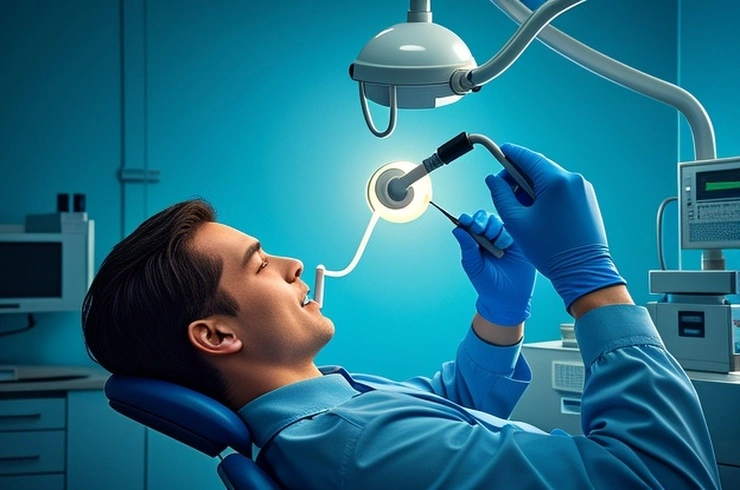
Air abrasion represents a significant advancement in conservative dentistry, offering a drill-less alternative for addressing minor tooth decay and other dental needs. This innovative technique employs a finely targeted stream of abrasive particles to gently and effectively remove compromised tooth material.
How Air Abrasion Works:
The process of air abrasion is akin to a miniature sandblasting operation within the mouth. A specialized instrument, or handpiece, delivers a precise stream of microscopic particles onto the affected tooth surface. These particles, typically composed of silica, aluminum oxide, or a baking soda mixture, are propelled by compressed air or gas. Upon impact, they meticulously abrade and dislodge small areas of decay or stain. A dedicated suction system then efficiently removes the abraded particles, ensuring a clean and safe environment.
Safety Considerations:
Air abrasion is a safe dental procedure when appropriate precautions are taken. Patients are provided with protective eyewear to shield their eyes from the airborne particles. Additionally, a rubber dam—a thin sheet of rubber placed around the teeth—or a protective resin applied to adjacent teeth and gums safeguards untreated areas of the mouth. The robust suction system prevents the patient from inadvertently inhaling the abrasive particles.
Advantages of Air Abrasion:
Compared to traditional drilling methods, air abrasion offers several compelling benefits:
Reduced Discomfort: The absence of heat, pressure, and vibration significantly enhances patient comfort, often eliminating or reducing the need for local anesthesia, particularly for superficial cavities.
Preservation of Tooth Structure: Air abrasion is highly precise, allowing the dentist to remove only the decayed portion while preserving a greater amount of healthy tooth tissue. This conservative approach can contribute to the long-term integrity of the tooth.
Lower Risk of Fractures: By avoiding the mechanical stress of a drill, air abrasion minimizes the risk of fracturing or chipping the tooth, a factor that some dental professionals believe can impact the longevity of a filling.
Streamlined Procedure: Although it may sometimes take slightly longer than conventional drilling, the procedure itself is relatively straightforward and less intimidating for many patients.
Limitations and Disadvantages:
Despite its advantages, air abrasion is not suitable for all dental situations:
Potential Sensitivity: While often reducing the need for anesthesia, the air and abrasive particles can still cause some sensitivity for certain individuals.
Scope of Application: Air abrasion is most effective for small, early-stage cavities, particularly those located on the outer or chewing surfaces of teeth. It is not recommended for deep cavities that are close to the tooth's pulp or for interproximal cavities (those between teeth).
Hard Enamel Removal: If significant amounts of hard enamel need to be removed to access underlying decay, a traditional drill may still be necessary as air abrasion is less effective for this purpose. Once access is gained, air abrasion can then be utilized.
Restoration Preparation: Air abrasion is not used for preparing teeth for larger restorations such as crowns, onlays, or inlays.
Ideal Candidates for Air Abrasion:
Air abrasion is an excellent option for children and individuals with dental anxiety, especially those with minimal decay. Its less invasive nature can make dental visits more comfortable and less stressful.
Other Applications of Air Abrasion:
Beyond cavity treatment, air abrasion can be used for various other dental procedures:
Removing some old composite (white) fillings (it is not effective for metallic restorations like amalgam fillings).
Preparing tooth surfaces to enhance bonding for sealants or other adhesive restorations.
Eliminating superficial stains and discolorations on tooth surfaces.
Insurance Coverage:
Dental insurance coverage for air abrasion varies significantly across plans. Patients are advised to contact their individual dental insurance providers to confirm coverage details.
Pro Tip
The content of the article is shared by netizens, please carefully identify it